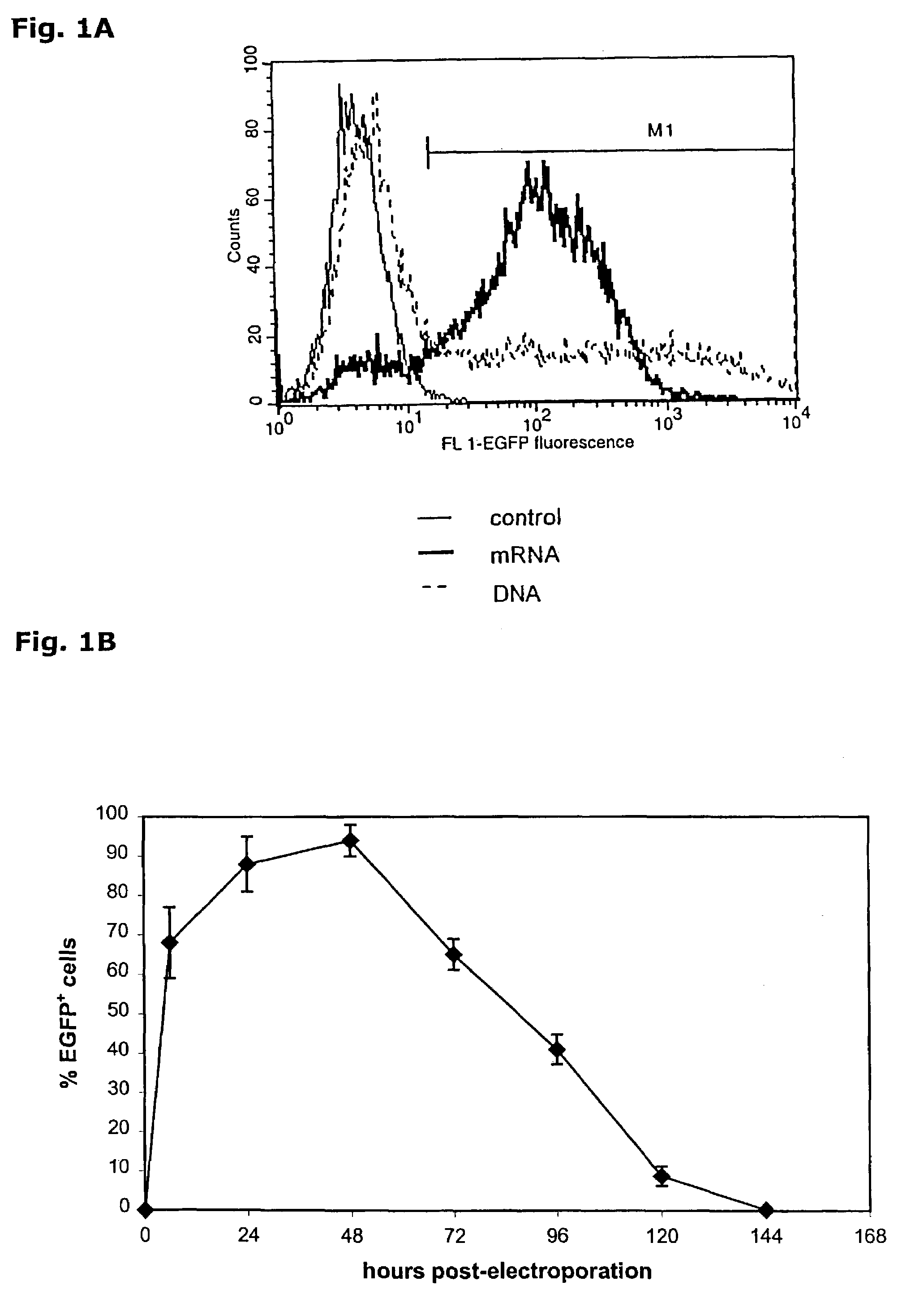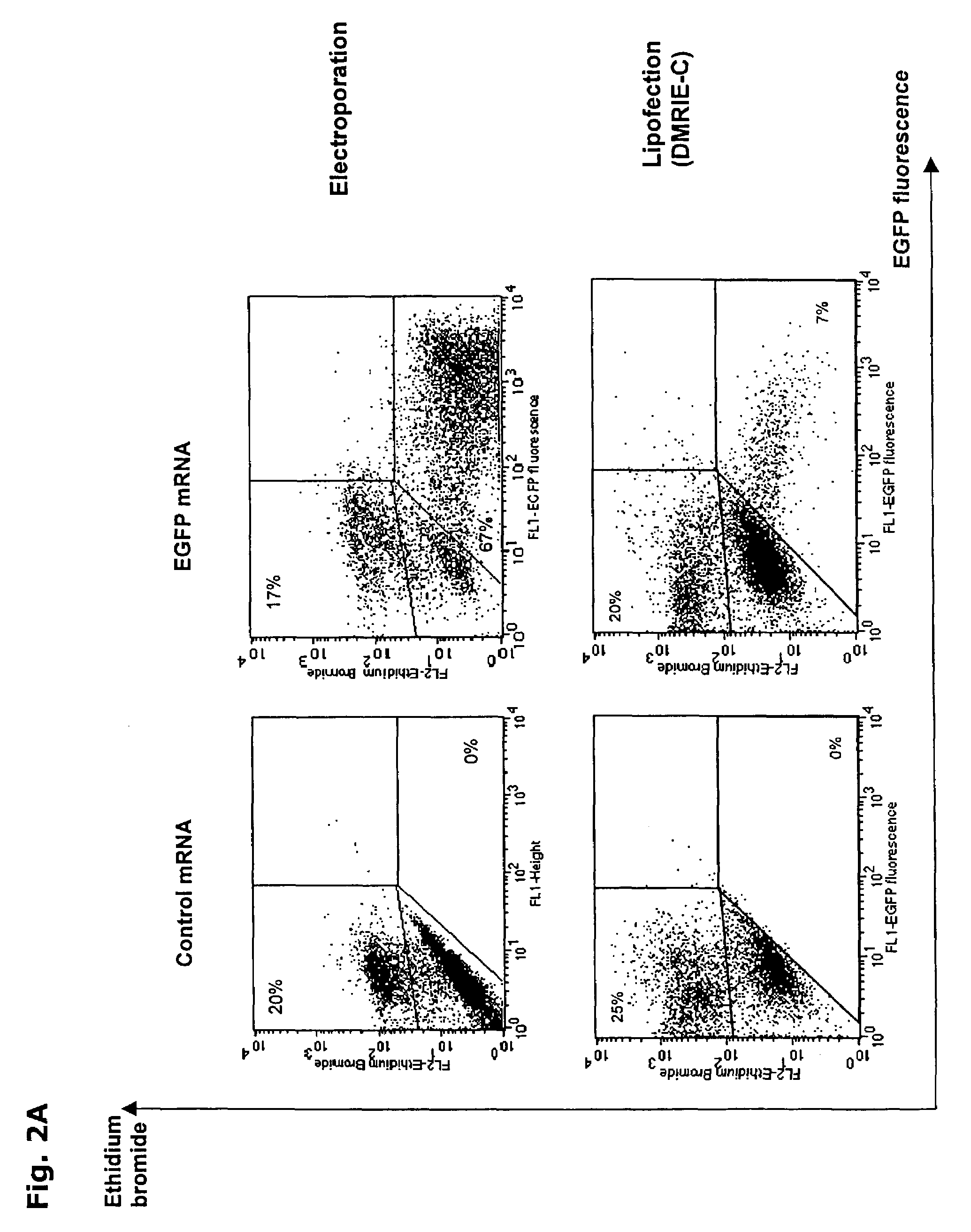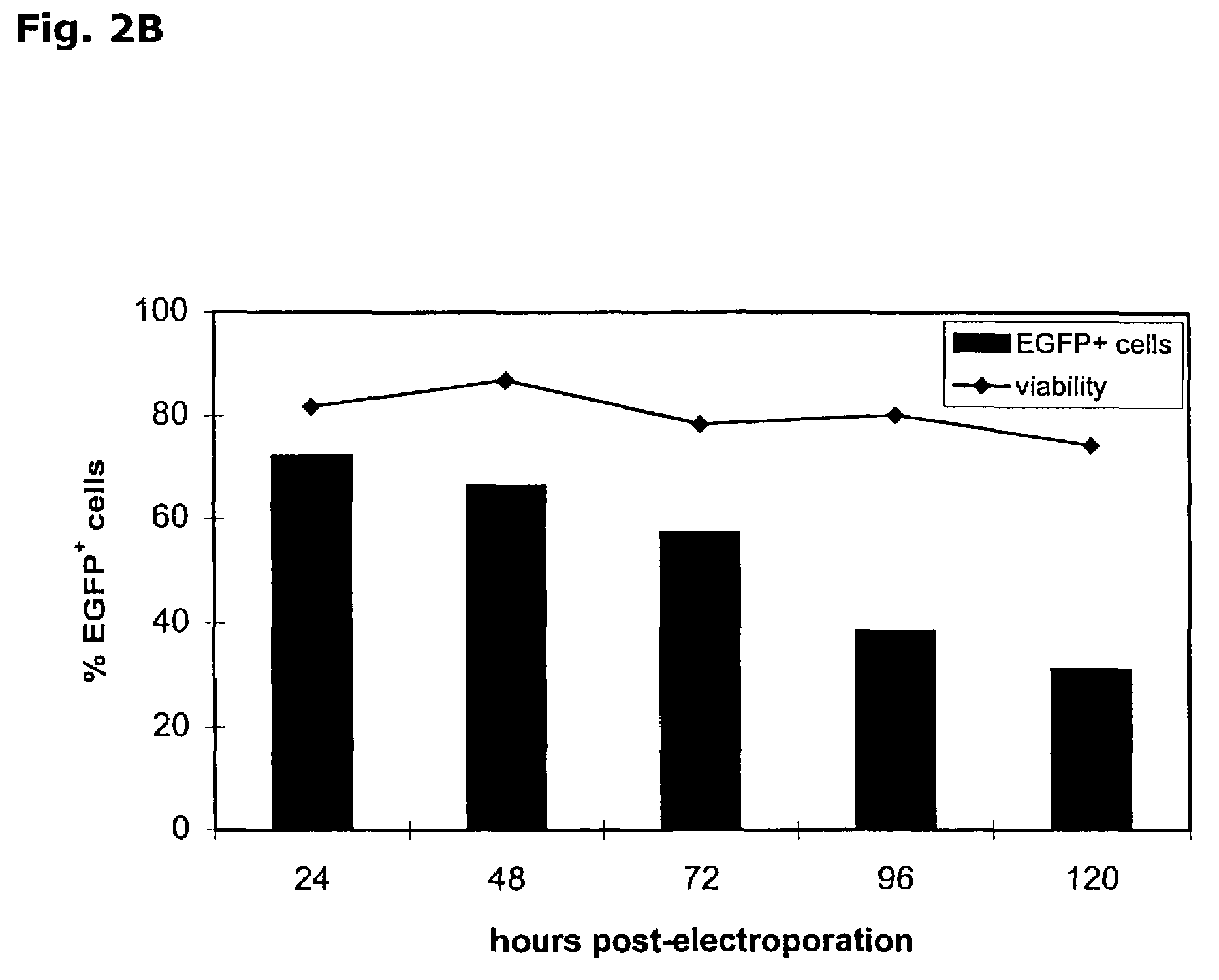Transfection of eukaryontic cells with linear polynucleotides by electroporation
a technology of eukaryontic cells and polynucleotides, applied in the field of eukaryontic cell linear polynucleotide transfection by electroporation, can solve the problem of less efficient transfection of ready mature dc, and achieve the effect of improving the efficiency of mrna transfection, effective loading of tumor antigens, and high-efficiency non-viral transfection
- Summary
- Abstract
- Description
- Claims
- Application Information
AI Technical Summary
Benefits of technology
Problems solved by technology
Method used
Image
Examples
example 1
[0125]A. Optimization of IVT mRNA transfection in K562 cell: In preliminary experiments to optimize mRNA electroporation, we used leukemic K562 cells, as these cells were readily transfectable by plasmid electroporation (Baum, C. et al., Biotechniques, 17:1058-1062 (1994)). The EGFP reporter gene was used to assess mRNA transfection efficiency. Various electroporation settings were tested and transfection efficiency was determined by FCM analysis of EGFP expression (FIG. 1A). Of all tested electrical settings, a voltage of 300 V combined with a capacitance of 150 μF in a total cuvette volume of 200 μl resulted in the highest EGFP expression (Table 1).
[0126]
TABLE 1Optimization of mRNA electroporation parameters in K562 cellsElectroporationvoltage (V)capacitance (μF)cell volume (μl)efficiency (%)viability (%)DNA26010505004049300 1502002885RNA300 1502008985300 30020083592601050500817325015005008069Lipofectionlipidlipid:DNA ratioincubation time (h)efficiency (%)viability (%)DNADMRIE-C3:...
example 2
[0141]EGFP RNA-transfection of immature monocyte-derived dendritic cells (generated from leukapheresis products and matured by a cocktail of IL-1β+IL-6+TNFα+PEG2 under GMP conditions for clinical application) by electroporation. Monocyte-derived immature Dendritic Cells (DC) were generated from leukapheresis products as described (Feuerstein, B. et al., J. Immunol. Methods 245: 15-29 (2000)). Immature DC (d6) were washed twice in RPMI and once in washing-solution of the Optimix®-Kit (EQUIBIO, Maidstone Kent, U.K.). DC were adjusted to a final cell concentration of 10×106 / ml in Optimix®-Medium. Then 0.2 ml of the cell suspension were mixed with 20 μg in vitro transcribed EGFP RNA in a 1.5 ml reaction tube. After incubation at room temperature for a maximum of 3 minutes the cell suspension were transferred in a 0.4-cm-gap electroporation-cuvette. Pulse were triggered at a voltage of 300 V and a capacitance of 150 μF with the Gene Pulser II (BioRad, Munich, Germany) resulting in pulse ...
example 3
EGFP RNA-transfection of Monocyte-derived Dendritic Cells by Electroporation—Titration of Voltage
A: Influence of Voltage on Cell Size and Granularity
[0144]Monocyte-derived immature Dendritic Cells (DC) were generated from leukapheresis products as described (Feuerstein, B. et al., J. Immunol. Methods 245: 15-29 (2000)). Immature DC (d6) were washed twice in RPMI and once in washing-solution of the Optimix®-Kit (EQUIBIO, Maidstone Kent, U.K.). DC were adjusted to a final cell concentration of 10×106 / ml in Optimix®-Medium. Then 0.2 ml of the cell suspension were mixed with or without 20 μg in vitro transcribed EGFP RNA in a 1. 5 ml reaction tube. After incubation at room temperature for a maximum of 3 minutes the cell suspension were transferred in a 0.4-cm-gap electroporation-cuvette. Pulse were triggered at the indicated voltage and a capacitance of 150 μF with the Gene Pulser II (BioRad, Munich, Germany) resulting in pulse time of 7-10 ms. Immediately after that the cell suspension...
PUM
| Property | Measurement | Unit |
|---|---|---|
| Time | aaaaa | aaaaa |
| Time | aaaaa | aaaaa |
| Time | aaaaa | aaaaa |
Abstract
Description
Claims
Application Information
 Login to View More
Login to View More - R&D
- Intellectual Property
- Life Sciences
- Materials
- Tech Scout
- Unparalleled Data Quality
- Higher Quality Content
- 60% Fewer Hallucinations
Browse by: Latest US Patents, China's latest patents, Technical Efficacy Thesaurus, Application Domain, Technology Topic, Popular Technical Reports.
© 2025 PatSnap. All rights reserved.Legal|Privacy policy|Modern Slavery Act Transparency Statement|Sitemap|About US| Contact US: help@patsnap.com



